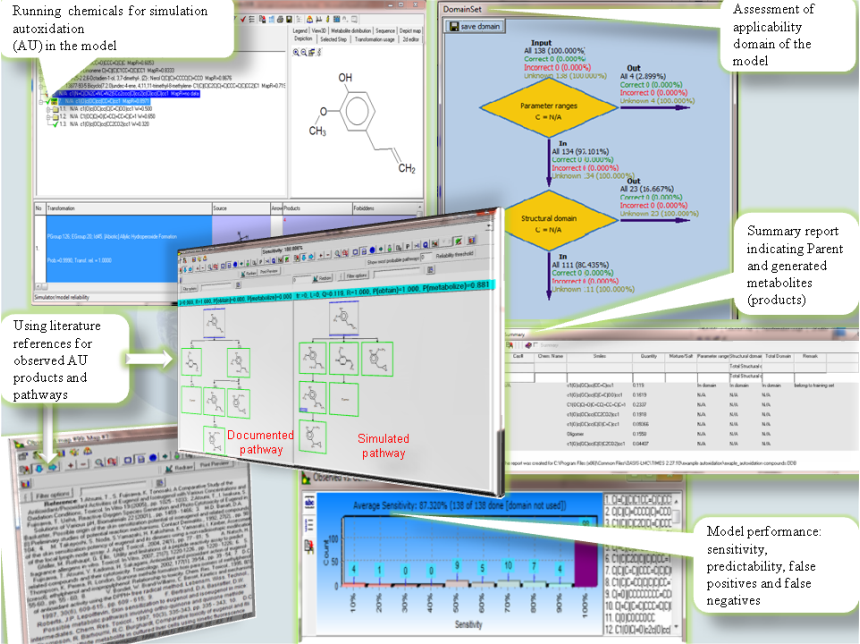Autoxidation
Endpoint
The autoxidation model simulates the abiotic oxidation pathways of chemicals under air or oxygen exposure at room temperature, atmospheric pressure and nearly neutral (pH 7 - 7,5) or slightly alkaline (pH 8 - 9) medium.
Data
Training set consists of 138 chemicals, including: 89 chemicals with observed autoxidation pathways and 49 chemicals with observed single autoxidation reactions[1, 3].The part of chemicals in the training set are provided by L'OREAL. The data were collected mainly from research publications in scientific journals stored in the LMC file format for computer treatment.
Model
The simulator contains 259 structurally generalized molecular transformations, extracted from the observed autoxidation pathways, and rules for their application. Reaction such as hydro-peroxide formation (alkyl, allyl, ether, benzylic); cyclic peroxide formation; oxidation of aldehydes, aromatic diamine oxidation, oxidation of benzendiols, aminophenols are predominant among the molecular transformations. Hydrolysis, dehydrogenation, decarboxilation and tautomeric reactions are the other transformations included in the model [2].
Domain
The stepwise approach [4] was used to define the applicability domain of the model. It consists of the following sub-domain levels:
- General parametric requirements - includes ranges of variation log KOW and MW,
- Structural domain - based on atom-centered fragments (ACFs).
A chemical is considered In Domain if its log KOW and MW are within the specified ranges and if its ACFs are presented in the training chemicals. The information implemented in the applicability domain is extracted from the correctly predicted training chemicals used to build the model and in this respect, the applicability domain determines practically the interpolation space of the model.
Performance
Average sensitivity: 88 % - probability that the autoxidation product is predicted, given that the product is truly observed.
Average predictability: 85 % - probability that the autoxidation product is truly observed, given that the product is predicted.
Reporting
The model provides results for:
- Quantities of parent and autoxidation products as a result of abiotic transformations,
- Applicability domain details.
References
1. L Hagvall, Doctoral Thesis, University of Gothenburg, 2009, 1- 74.
2. S Dimitrov, T Pavlov, SAR and QSAR in Environmental Research, 2007, 443-457.
3. L Hagvall, C Backtorp; Chem. Res. Toxicol., 2011, 24, 1507-1515.
4. S Dimitrov, G. Dimitrova, T. Pavlov, N. Dimitrova, G. Patlevisz, J. Niemela and O. Mekenyan, J. Chem. Inf. Model., 2005, 45, 839-849.

